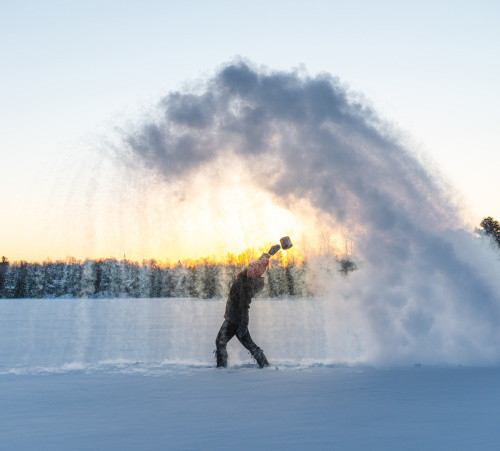If you look at old photos of the logging camps in the Ely and Winton area, you might notice something surprising that is common in all of them: they were all taken in winter. Why would loggers choose to work in the harsh northern Minnesota winters rather than in the fair and beautiful summers? The answer is that, at least back then, it was the only time of year they could.

5 Men Outside Of Browns Logging Camp In the Early 1900s
Much of the timber areas in northern Minnesota are in bog lands or otherwise wet and soft ground. If loggers were to cut and transport logs in this terrain in the summer, their sleds and machinery would sink into the ground, get stuck, and tear up the soil. In winter, however, the ground freezes, making the landscape hard and stable. Crews built and meticulously maintained special “ice roads,” and these paths allowed teams of horses to transport massive loads of logs to the trains that then would take them to lumber mills. Most foremen planned on starting hauling the logs by Christmas, when there would have been a solid foot of ice on the roads.

Lumber Camp At Garden Lake
Though the winter cold made transporting logs possible, it of course made the working conditions for the loggers very rough. Temperatures regularly get below zero, making frostbite a very real threat. Particularly bad snowstorms could cover log piles with so much snow that loggers could no longer identify them, leaving the timber lost until the spring thaw. Loggers lived in logging camps during the working season, and these camps could be miles from the logging sites themselves, meaning the loggers would have to hike through the ice and snow before getting to work, then hike all the way back at the end of the day to get shelter. Logging camps housed typically 75 to 100 men in the early years, then up to 200 later on. Some camps were built to be comfortable, while others were considered miserable by loggers, and it all depended on who the foreman was.
Logging was hard work in the brutal northern Minnesota winters, but it provided a means of living to thousands of European immigrants who were seeking jobs in the Northwoods, to experience the “American dream.”

Lumber Jack Axing A Tree
